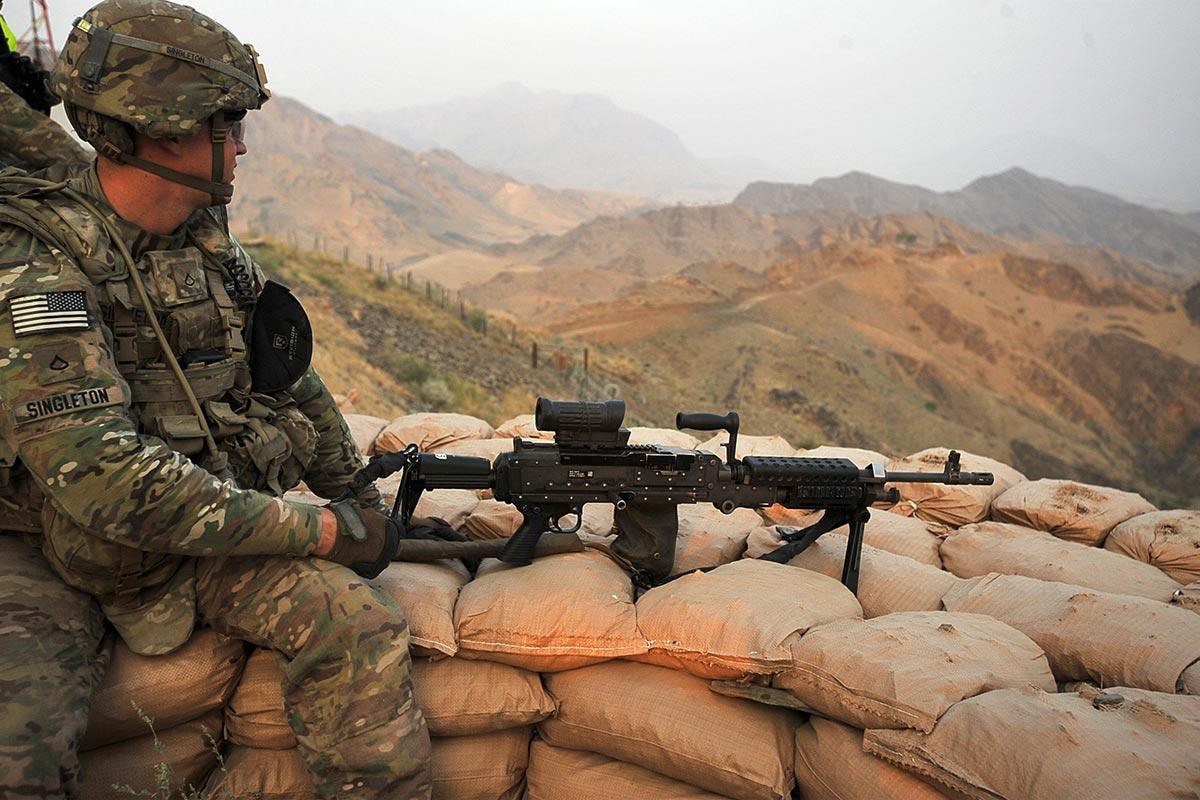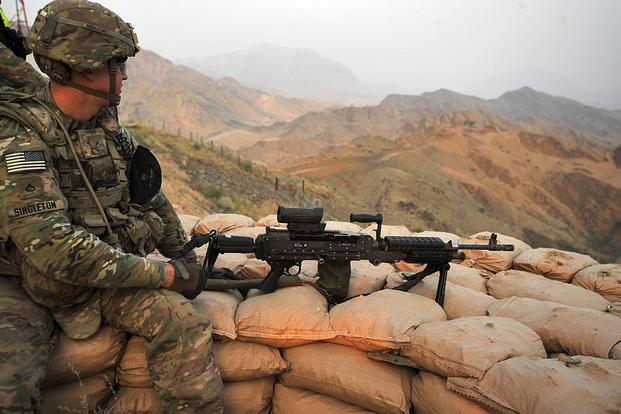

The U.S. Army is close to approving a new lightweight body armor plate with a “shooter’s cut” to provide close-combat forces with greater mobility in combat.
Program Executive Office Soldier officials announced last October that the Army was trying to design new plates that are significantly lighter than the current plates soldiers wear to protect from enemy rifle rounds.
This spring, Brig. Gen. Anthony Potts, head of PEO Soldier, plans to brief the Army’s senior leadership for a decision on whether to move forward on a new version of the Enhanced Small Arms Protective Insert, or ESAPI, that features a more streamlined design.
“We are looking at a plate with the design that we refer to as a shooter’s cut,” he told reporters recently. “We believe that an increase in mobility provides survivability just as much as coverage of the plate or what the plate will stop itself.”
Related: Army to Test Out Lighter Body Armor Plates This Year
Potts said the new design offers slightly less coverage in the upper chest closest to the shoulder pocket.
“Our soldiers absolutely love it, and the risk to going to a higher level of injury is .004 meters squared. I mean, it is minuscule, yet it takes almost a full pound off of the armor,” he said.
Potts said he plans to brief Army Vice Chief of Staff James C. McConville in the next couple of months on the new plate design, which also features a different formula limiting back-face deformation — or how much of the back face of the armor plate is allowed to move in against the body after a bullet strike.
“Obviously, when a lethal mechanism strikes a plate, the plate gives a little bit, and we want it to give a little bit — it’s by design — to dissipate energy,” Potts said. “The question is, how much can it give before it can potentially harm the soldier?”
The Army has tested changing the allowance for back-face deformation to a 58mm standard instead of the 44mm standard it has used for years.
“We have found what we believe is the right number. We are going to be briefing the vice chief of staff of the Army, and he will make the ultimate decision on this,” Potts said.
“But right now, with the work that we have done, we think we can achieve, at a minimum, a 20 percent weight reduction. … We have been working with vendors to prove out already that we know we can do this,” he said.
— Matthew Cox can be reached at [email protected].
© Copyright 2022 Military.com. All rights reserved. This material may not be published, broadcast, rewritten or redistributed.
